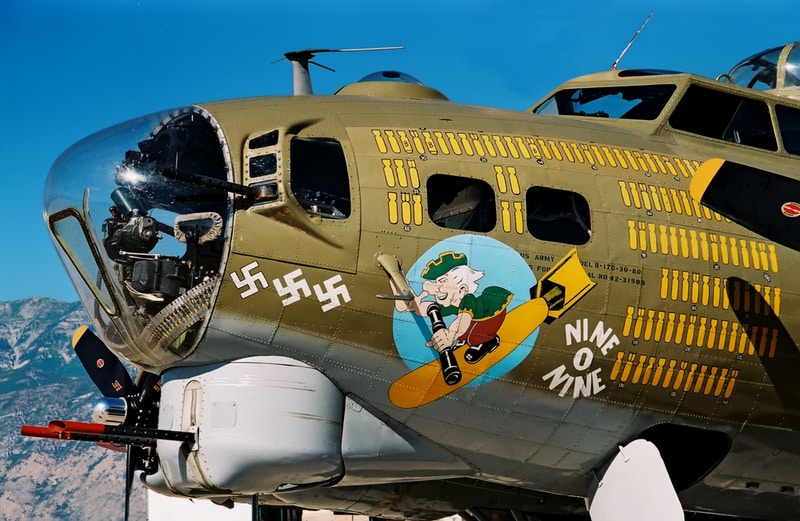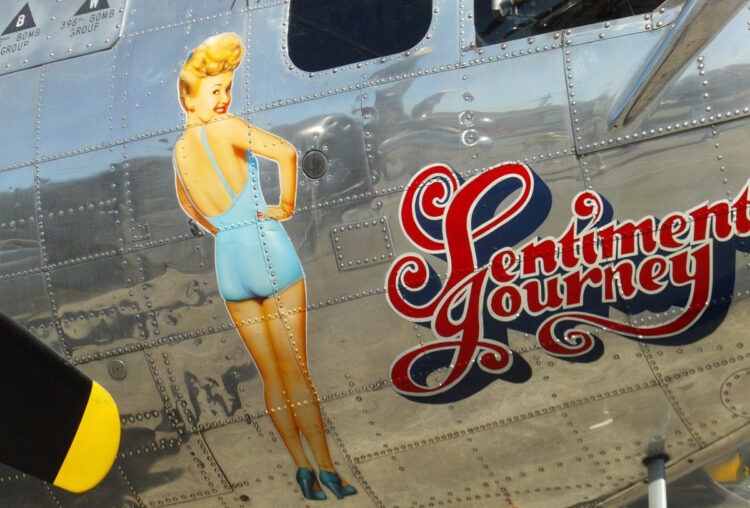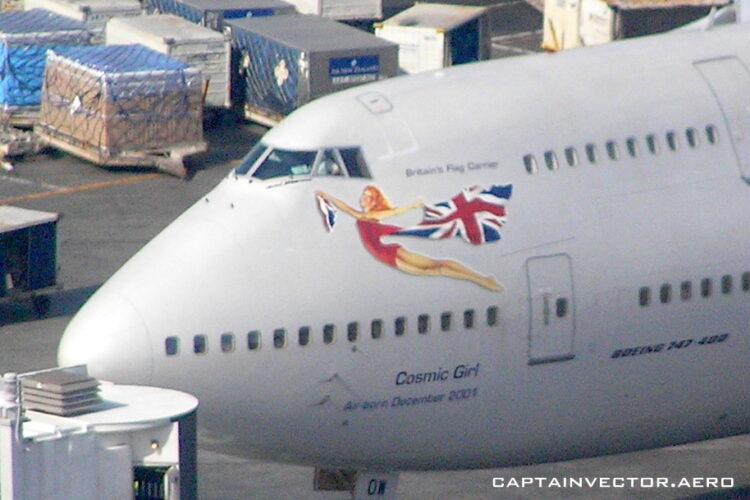The tradition of painting artwork on military airplanes dates back to the early days of aviation, with the first reported use of art on an aircraft dating to 1913 when an Italian boat plane was seen sporting a sea monster on its fuselage. Italian pilots regularly adorned their war planes with distinctive markings, such as the prancing black horse, Cavallino Rampante, painted onto the aircraft of Italian ace Francesco Baracca, which later inspired the iconic Ferrari logo.
During World War I, decorative colors became a popular way to disguise “ace” units. The Imperial German forces had the famous Baron Von Richthofen and his “Flying Circus,” which was known for its brightly colored aircraft, including Von Richthofen’s bright red fighter.
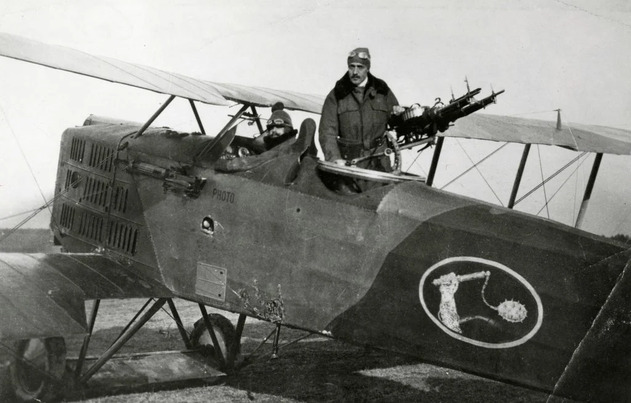
The practice of painting artwork on aircraft continued to evolve during World War II, often featuring women. Pin-up art, popular among servicemen, found its way onto military airplanes, serving as a morale booster and a reminder of home. The image of shark teeth on the nose of aircraft first appeared on Luftwaffe Bf 110s, and later, the members of No.112 Squadron RAF copied this shark-tooth smile onto their Curtiss P40s in North Africa. This iconic design was also adopted by the First American Volunteer group, known as the Flying Tigers, in China.
Bombers provided a larger canvas for artists, and their artwork often included nicknames and depictions of popular characters, events, or pin-up girls. The popularity of pin-ups grew as they served as a reminder of home and boosted the morale of the predominantly young men serving far away. The artists behind these works ranged from air and ground crews to enlisted graphic artists and designers. Some artists were paid for their paintings, and their backgrounds ranged from Disney to Esquire.
In the post-war era, nose art continued to make appearances in conflicts like the Korean and Vietnam Wars, with memorable examples seen on AC-130 gunships. However, official policies regarding nose art tightened, and changes in attitudes towards women led to a decline in the pin-up design. The United States Air Force mandated gender-neutral nose art in 1993.
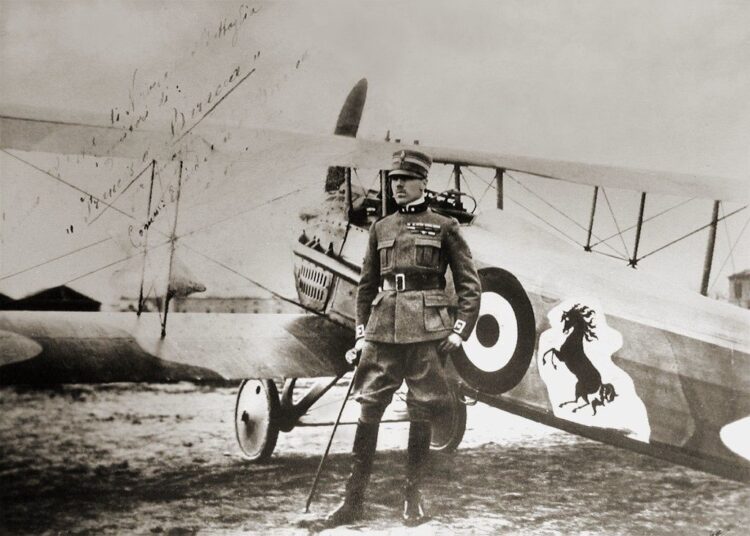
Nevertheless, nose art continues to exist today, with the USAF allowing patriotic and reflective designs on some aircraft. In the civilian world, airliners often feature official names, but the most widely recognized nose art can be found in the form of the Virgin Airways girls on the forward section of the aircraft’s body.
*The views and opinions expressed on this website are solely those of the original authors and contributors. These views and opinions do not necessarily represent those of Spotter Up Magazine, the administrative staff, and/or any/all contributors to this site.
Sources
https://www.aerosociety.com/news/war-paint-shark-teeth-and-pin-ups-a-brief-history-of-aircraft-nose-art/
https://www.aircorpsart.com/blog/the-artist-who-influenced-wwii-military-aircraft-pinup-nose-art/
https://en.wikipedia.org/wiki/Nose_art
